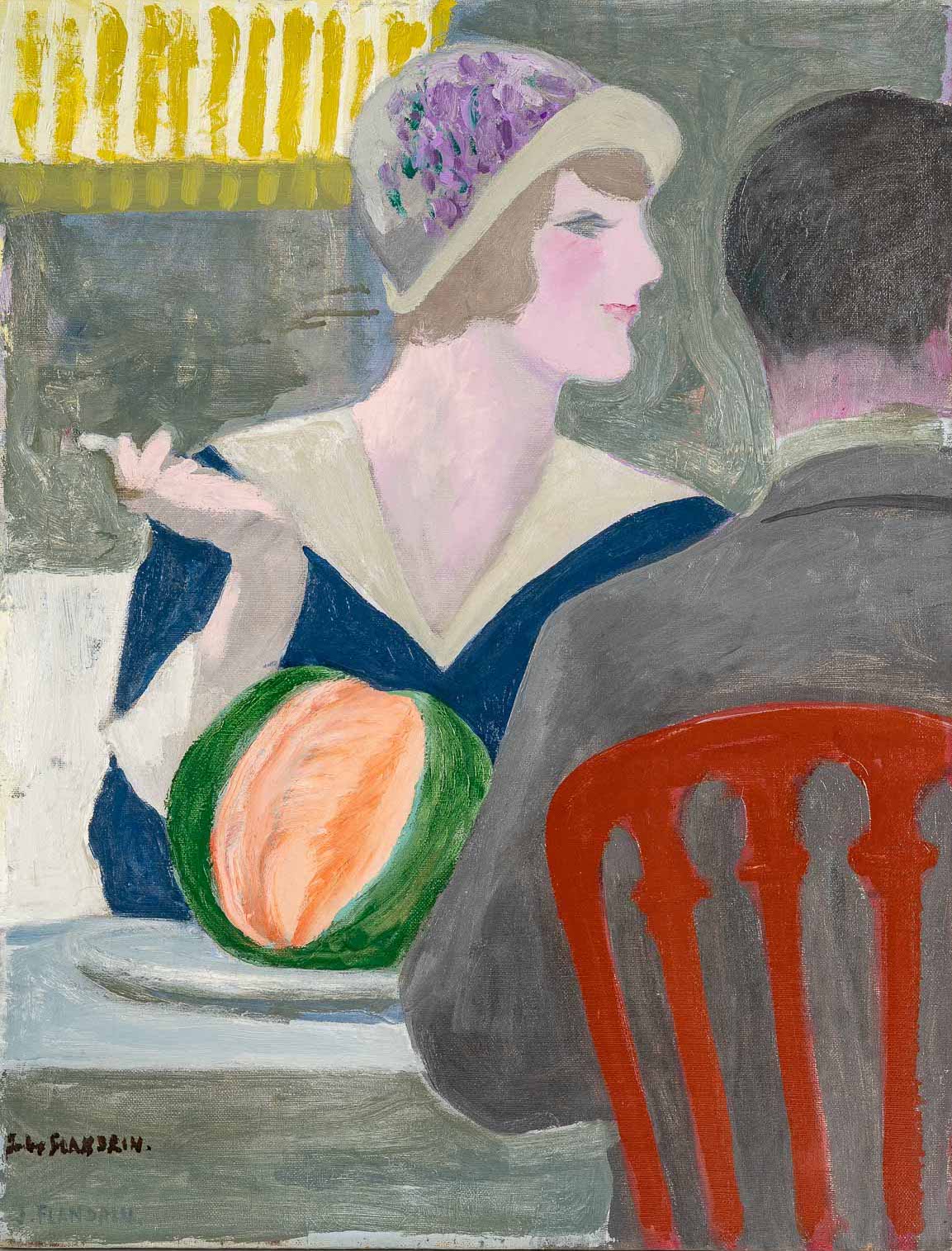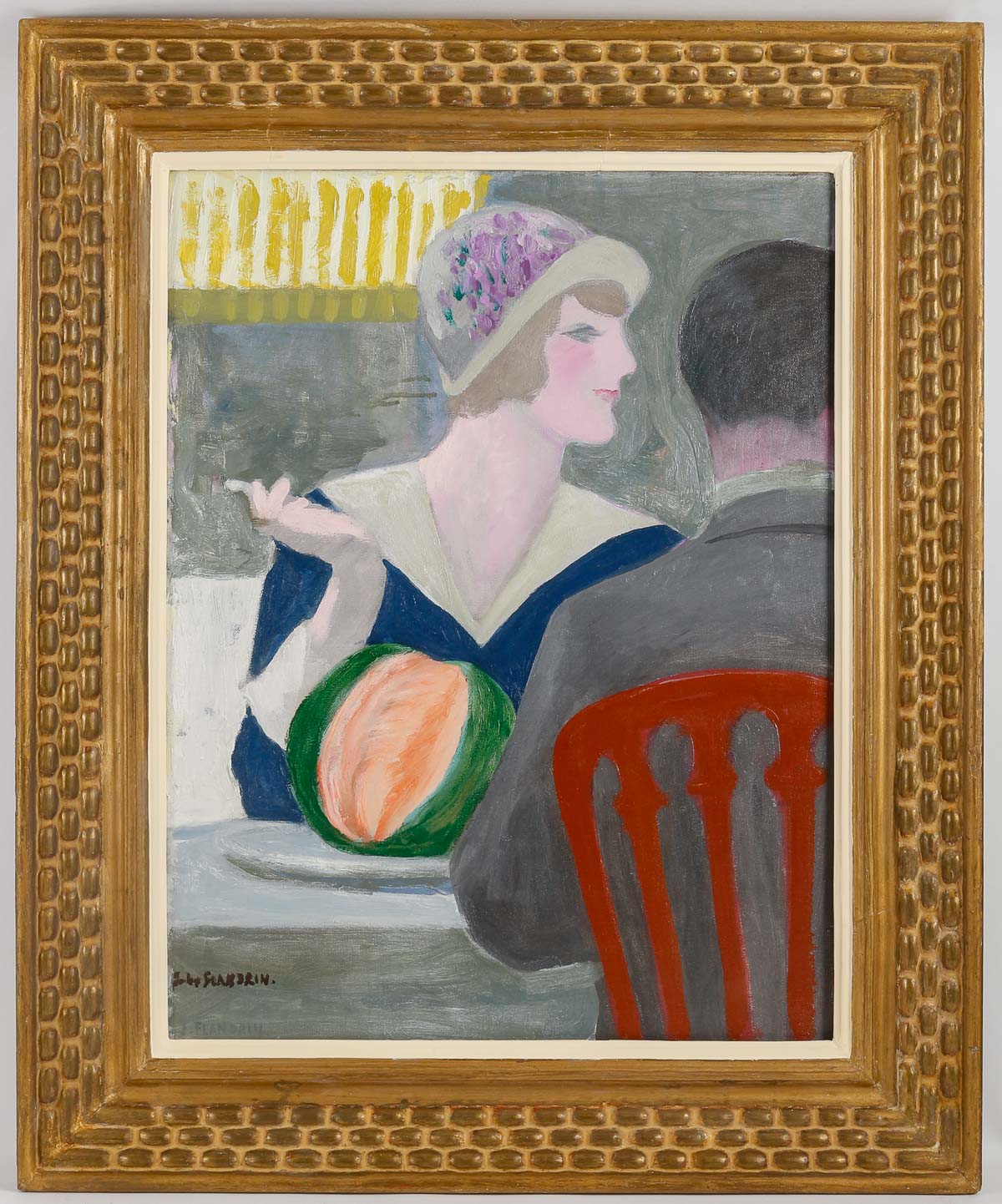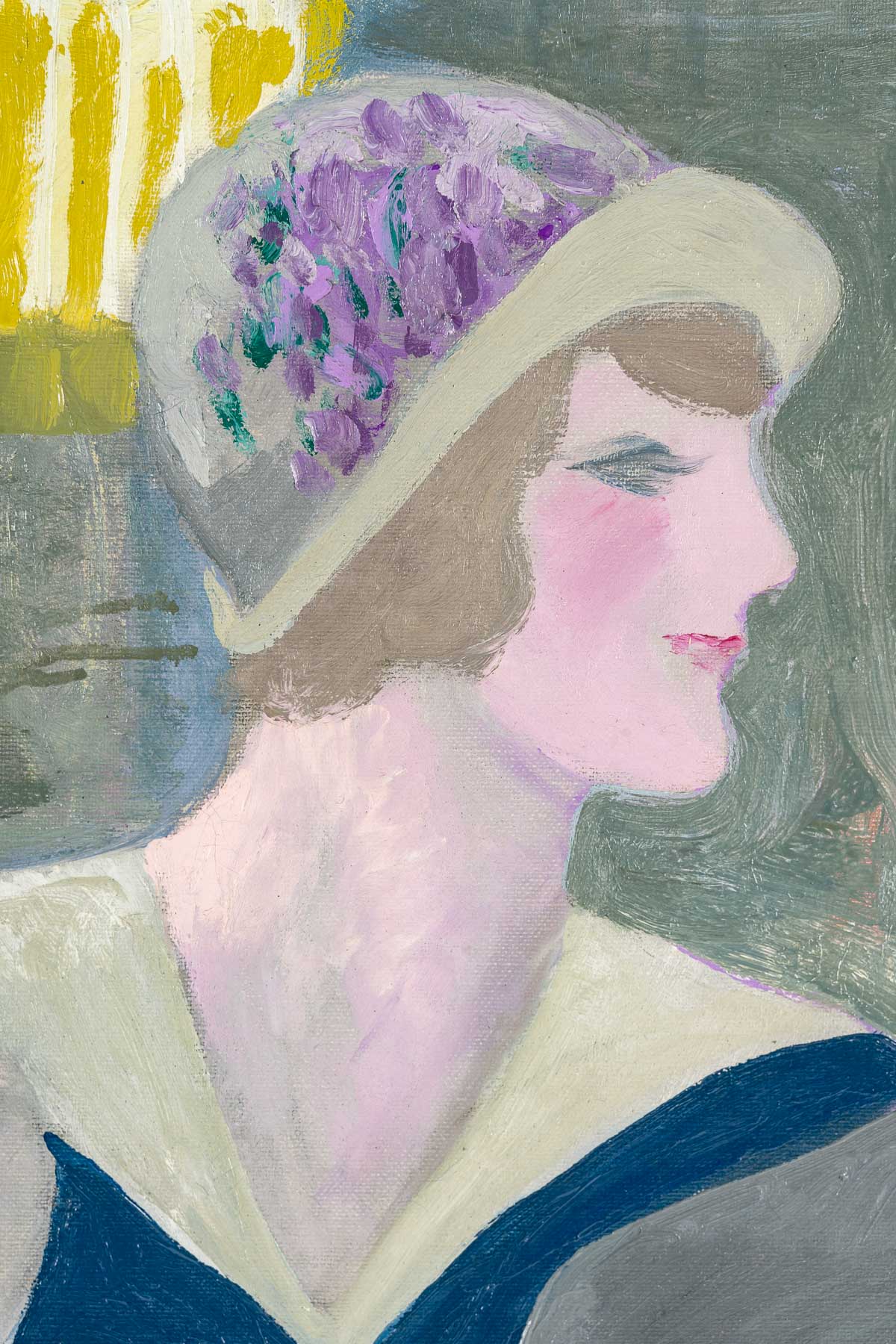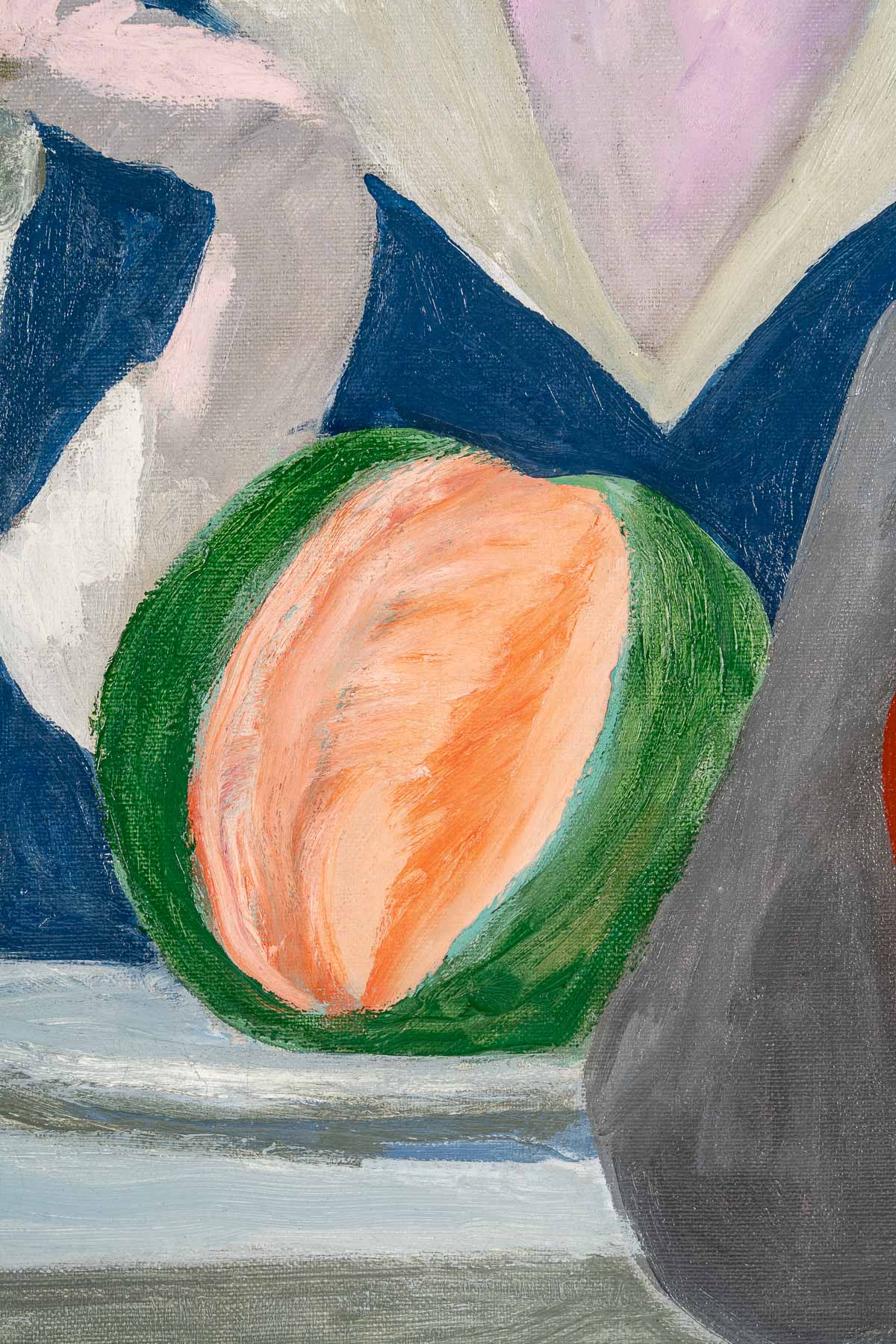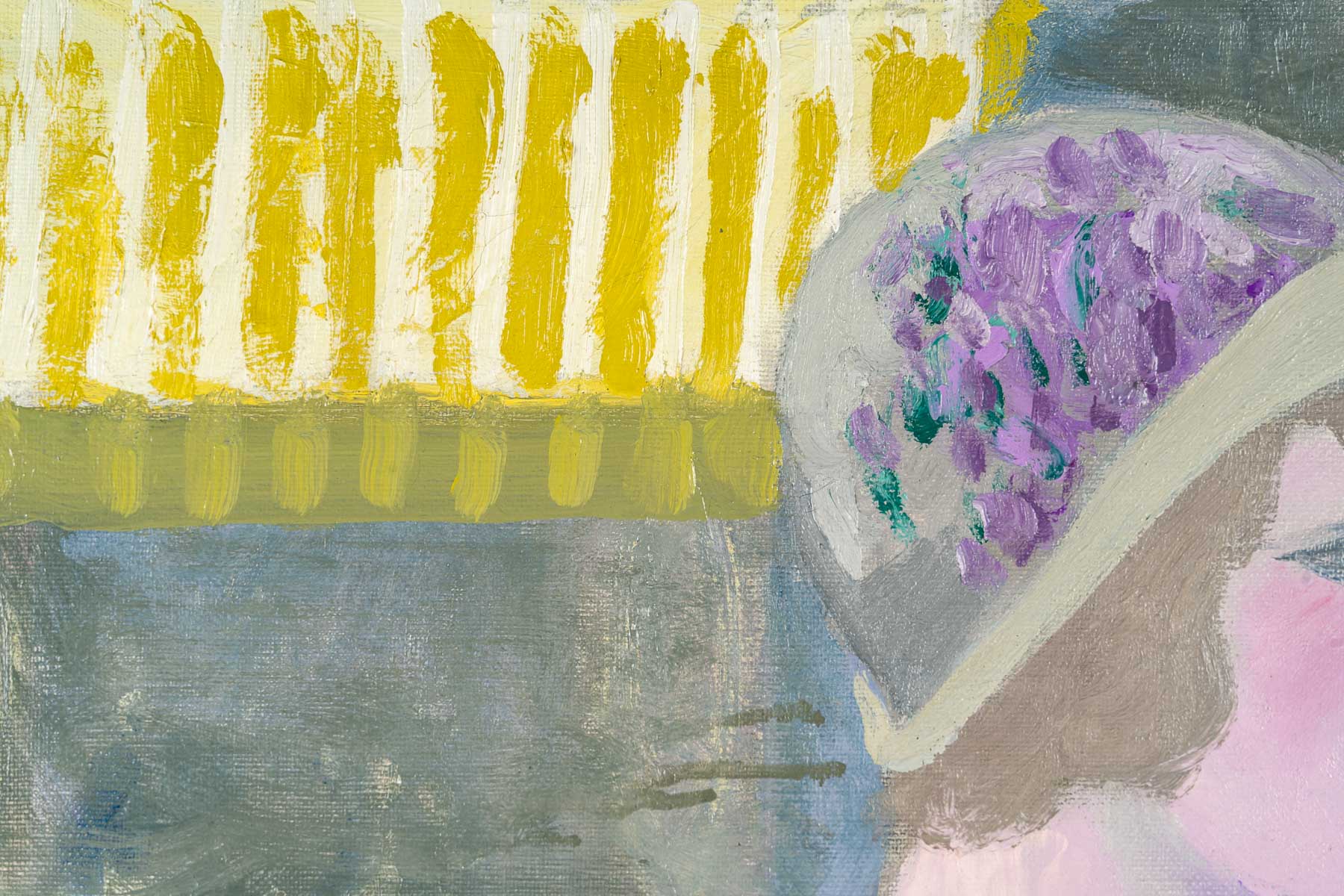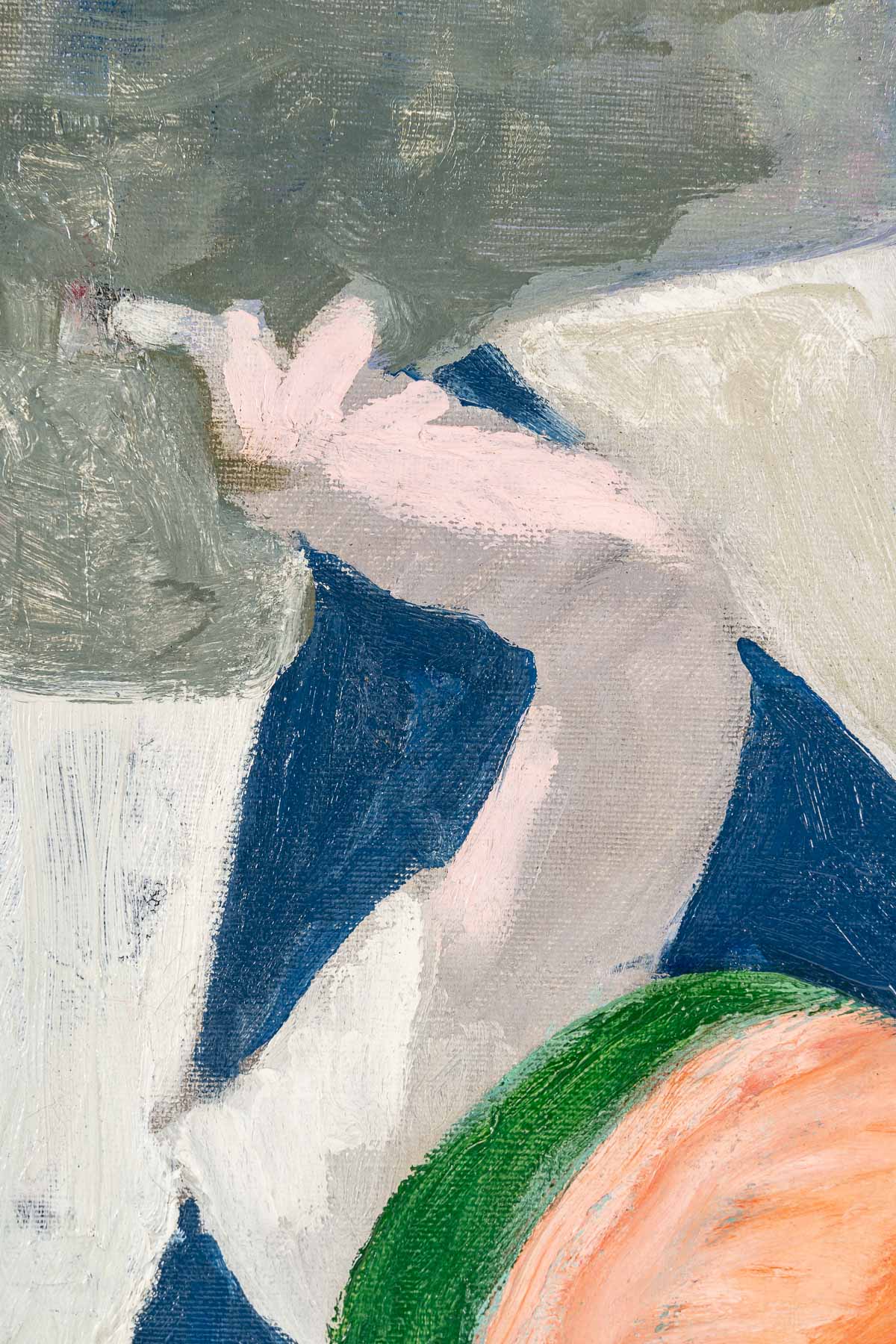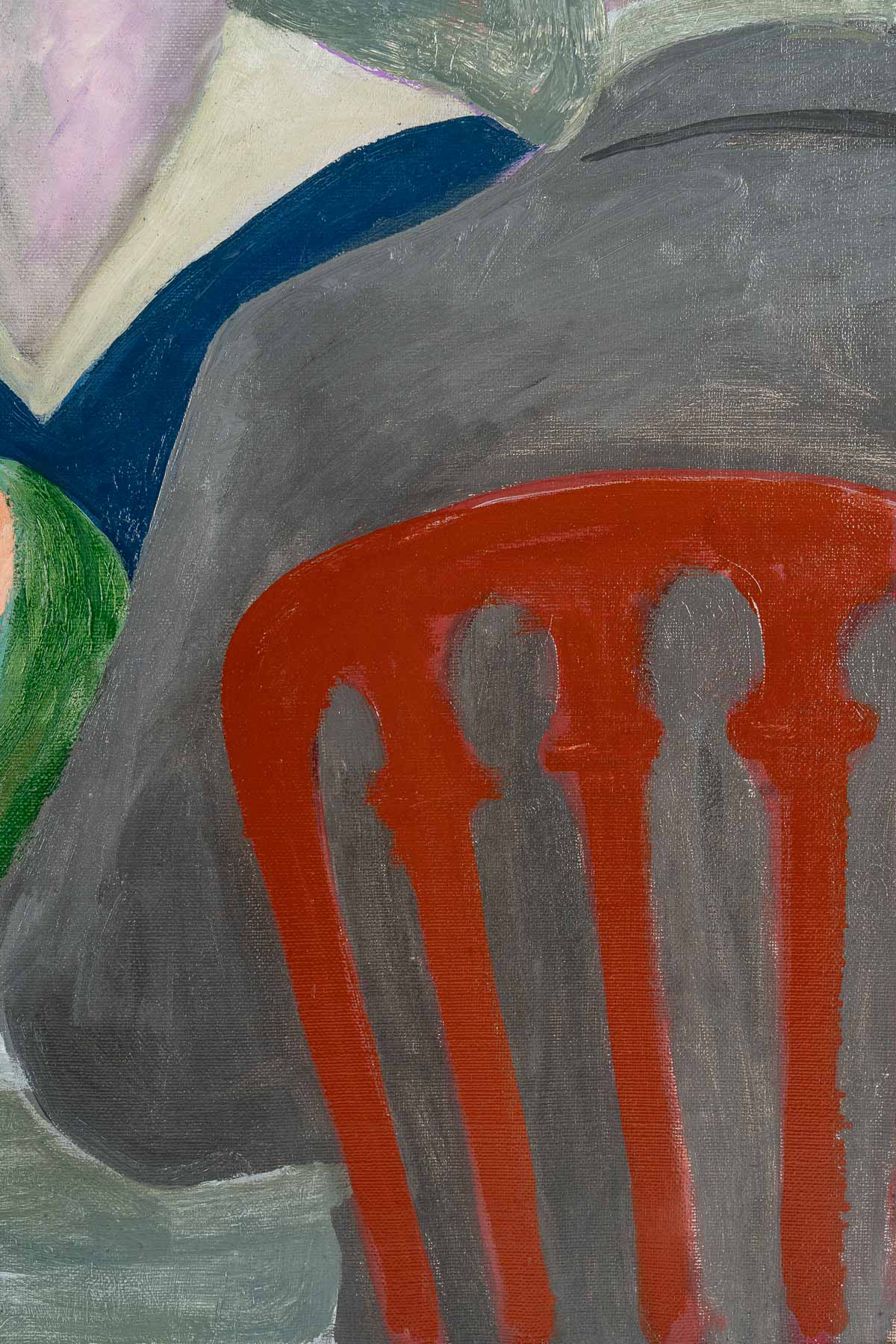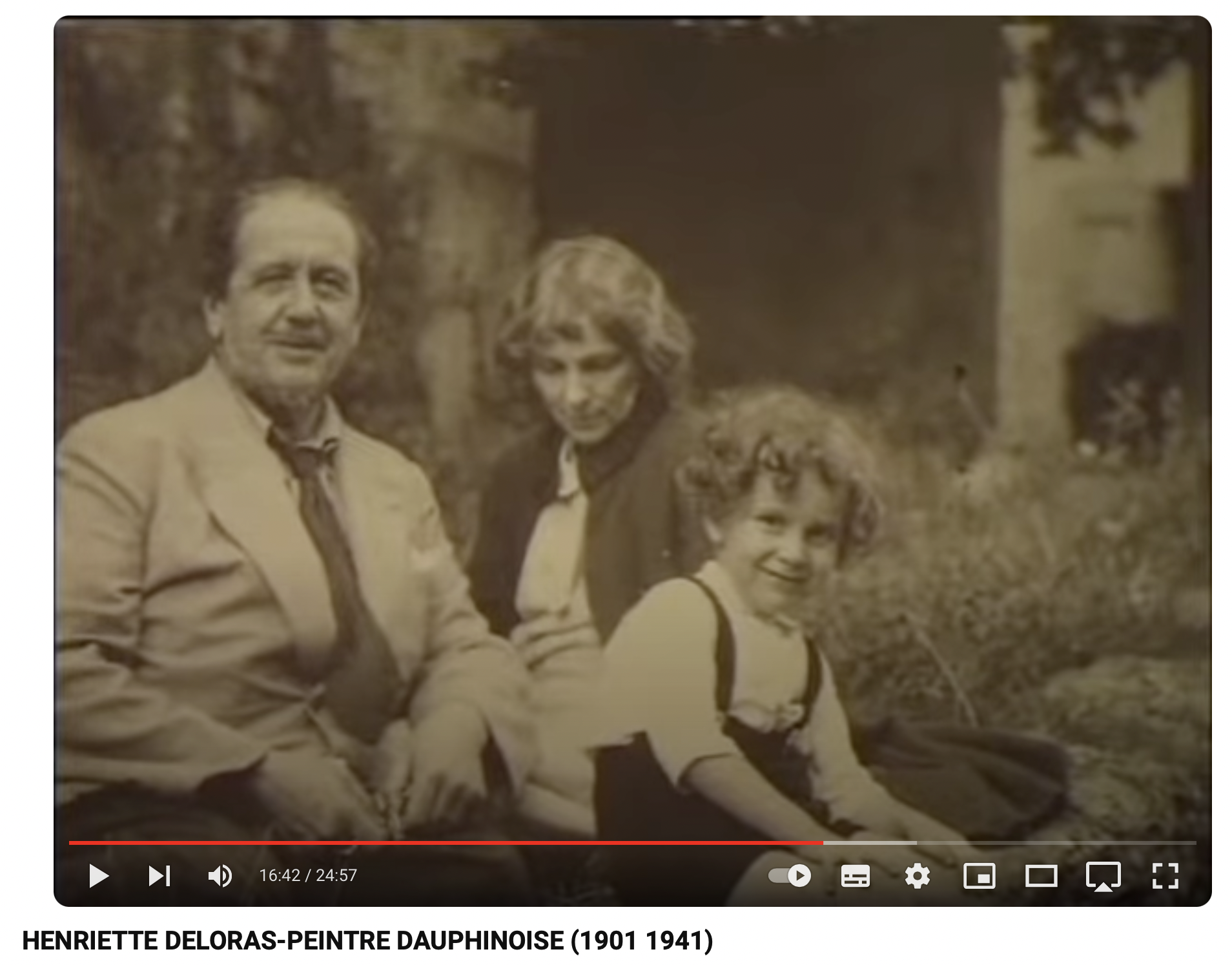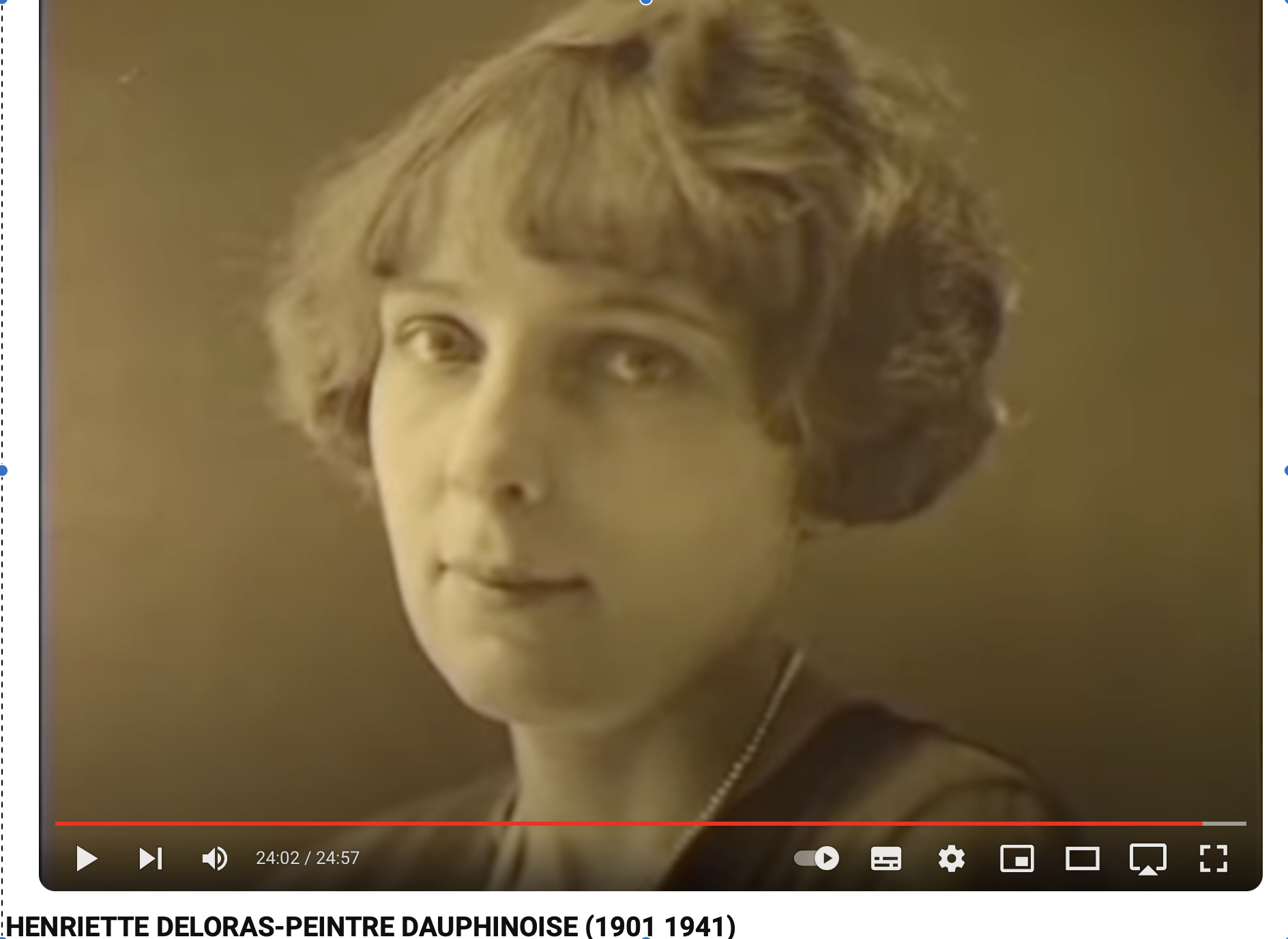Jules FLANDRIN (1871-1947)
A modern, synthetic and colorful work by Jules Flandrin, from 1925, depicting a portrait of his companion, the painter Henriette Deloras, wearing a hat and having sweet melon at the restaurant.
Oil on canvas
Signed twice at the bottom left
Dimensions: 65 x 50 cm
With frame: 84 x 70 cm
Exhibited in Japan in 1926 / 1927, Franco-Japanese art society Tokyo. Exhibited in Lyon, Galerie des Jacobins Troncin frères from January 13 to 29, 1936 n° 5 “” The melon “” – Archives of Mr Georges Flandrin “- A postcard of the painting has been edited.
Price: €15,000
Jules Flandrin, Henriette Deloras, a love story
Henriette Deloras met Jules Flandrin at an early age. In 1905, on the death of her father, the young Grenoble native went to live with her grandmother in Corenc, whose house was next door to the Flandrin family estate. Every summer, she met Jules Flandrin, a Parisian painter by adoption, who was surprised by the character and strength of her drawings, he encouraged her to continue and he opened his studio to her. 30 years older than her, he became his mentor and his love.
Attracted by Paris and this painter, she falls under the capital’s charm. She discovered the hectic life of the post-war period, and became the ingenuous interpreter of its bars and jazz clubs, which she portrayed intuitively and spontaneously. She rubbed shoulders with the greatest artists. She became ” the charming, boisterous little Dauphinoise warbler, an inveterate stroller of the Paris she loved so much!” Andry Farcy, curator of the Musée de Grenoble
In our painting, J Flandrin expresses his admiration for his young companion, depicted in the center of the picture like a Madonna. The couple seated face to face are not alone. The faces of the figures are turned towards other interlocutors, but the spectator painter puts all the light on his main subject, his companion, and adorns her with vivid colors.Like many artists, J Flandrin uses symbols here, the cigarette symbolizing the free woman; the melon symbolizing earthly pleasures, fertility and life.
A modern, synthetic work with simplified forms and pure colors areas.
Close to Maurice Denis, Jules Flandrin shares with the Nabis an aesthetic made of simplified shapes and a synthesis of forms. He took pure colors and colorful areas technic from his friend Matisse .
In this work, his sense of color leads him to combine warm and cool tones with great subtlety. The grays in our painting are lifted by a few bright colors: the orange of the melon, the red of the chair, the yellow of an awning, the purple of the flowers in the hat and the pink of the face.
Jules Flandrin is undoubtedly an important painter of modern art.
Biography
Jules Flandrin was a student of Gustave Moreau in the famous “fauve” class next to Marquet, Rouault and Matisse. Painter of landscapes, intimate scenes and still lifes; his free expression allows him to approach different genres with ease. He was influenced by the richness and variety of modern painting trends: from the Post-Impressionists with Signac, to the Nabis (his friends Maurice Denis, Bonnard, Sérusier,…) to Fauvism with Marquet and Matisse, his friends.

